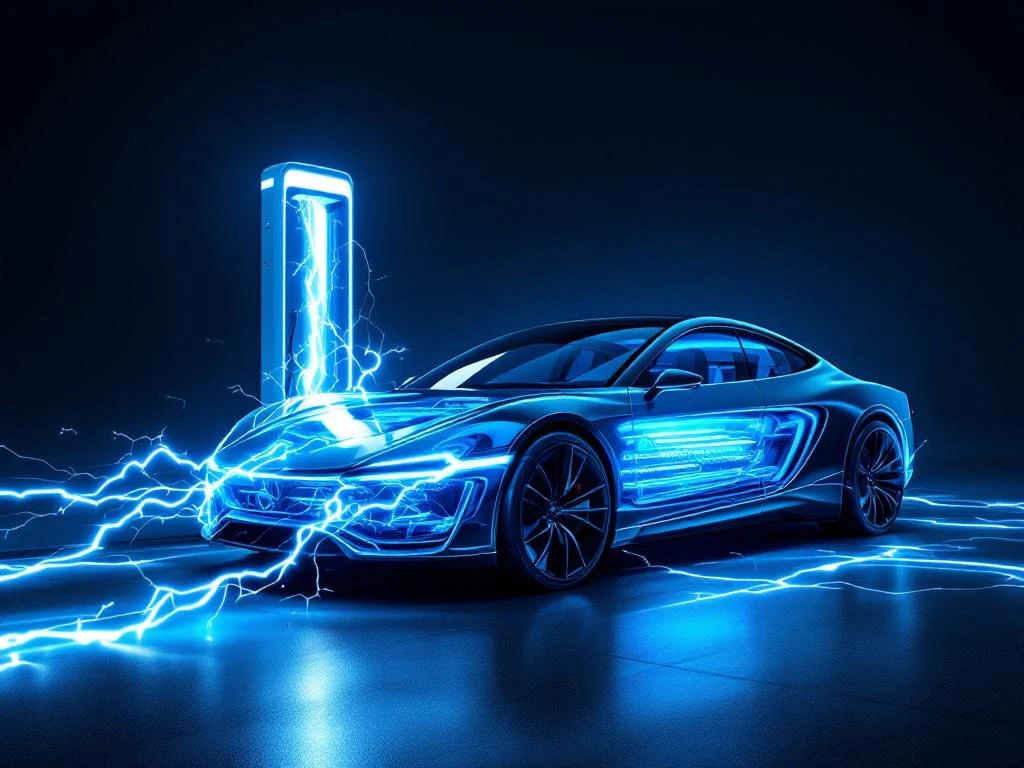Fast charging for EV batteries refers to high-power charging systems that deliver significantly more energy per minute than standard charging methods. These systems typically operate at power levels above 50kW and can charge an electric vehicle battery from 10% to 80% capacity in 15-45 minutes. Fast charging uses specialised infrastructure and charging protocols to safely manage the increased electrical flow while protecting battery health.
What exactly is fast charging for electric vehicle batteries?
Fast charging is any electric vehicle charging system that delivers power at rates significantly higher than standard home charging. These systems typically operate between 50kW and 350kW, compared to home chargers that usually provide 3-22kW.
The technical distinction lies in the power delivery method. Fast charging uses direct current (DC) to bypass the vehicle’s onboard charger, feeding power directly to the battery modules. This approach eliminates conversion losses and allows much higher charging speeds than alternating current (AC) systems.
Different charging standards govern how this power transfer happens. The Combined Charging System (CCS) is widely used in Europe and North America, whilst CHAdeMO remains popular in Asian markets. Tesla’s Supercharger network uses a proprietary connector, though newer stations support CCS compatibility.
Voltage requirements vary significantly between rapid charging technology systems. Most fast chargers operate between 400-800 volts, with some newer systems reaching 1000 volts. Higher voltages enable faster charging speeds whilst reducing current flow, which minimises heat generation and improves efficiency during the charging process.
How does rapid charging affect battery lifespan and performance?
Rapid charging creates additional stress on ev battery cells through increased heat generation and accelerated chemical reactions. This can reduce overall battery lifespan by 5-15% compared to slower charging methods, though modern battery management systems help minimise this impact.
Heat represents the primary challenge during fast charging sessions. High charging currents generate thermal energy that can damage battery cell structures if not properly managed. Most electric vehicles include sophisticated cooling systems that circulate coolant around battery packs during rapid charging to maintain optimal temperatures.
Chemical stress occurs when lithium ions move rapidly between the battery’s anode and cathode during high-speed charging. This accelerated movement can cause microscopic changes in the electrode materials over time, gradually reducing the battery’s ability to hold charge.
Long-term capacity retention depends heavily on charging habits and thermal management. Batteries that regularly experience fast charging may retain 85-90% of their original capacity after 100,000 miles, compared to 90-95% for those primarily charged at slower rates. However, the convenience benefits often outweigh these modest capacity reductions for most users.
Why do different electric vehicles charge at varying speeds?
Electric vehicle charging speed variations result from differences in battery chemistry, thermal management capabilities, and charging system architecture. A vehicle’s maximum charging rate depends on the weakest component in its charging system, whether that’s the battery, cooling system, or onboard electronics.
Battery chemistry plays a crucial role in determining charging speed limits. Lithium iron phosphate (LFP) batteries typically charge more slowly than nickel-based chemistries but offer better thermal stability. Newer silicon-enhanced anodes can accept higher charging rates whilst maintaining safety margins.
Thermal management systems vary dramatically between manufacturers and price points. Premium electric vehicles often feature sophisticated liquid cooling systems that maintain optimal battery temperatures during fast charging. Budget models may rely on simpler air cooling, which limits their maximum charging speeds to prevent overheating.
Charging infrastructure compatibility also affects real-world charging speeds. A vehicle designed for 150kW charging will only charge at 50kW when connected to a 50kW charger. Similarly, older charging stations may not support the latest high-speed protocols, limiting charging performance regardless of vehicle capabilities.
Manufacturer design choices reflect different priorities and cost considerations. Some brands prioritise maximum charging speed for marketing appeal, whilst others focus on battery longevity and consistent performance. These philosophical differences result in varying charging capabilities even among vehicles with similar battery capacities.
What determines how fast an EV battery can actually charge?
Battery charging speed depends on multiple limiting factors working together, including current battery temperature, state of charge, available infrastructure power, and built-in safety protocols. The charging system automatically adjusts power delivery based on whichever factor imposes the strictest limitation at any given moment.
Battery temperature significantly influences charging speed throughout the session. Cold batteries below 15°C charge much slower to prevent lithium plating, whilst hot batteries above 35°C also reduce charging rates to prevent thermal damage. Most modern electric vehicles pre-condition their batteries when navigation to a fast charger is active.
State of charge creates a natural charging curve that starts fast and gradually slows down. Electric vehicle charging typically peaks between 10-30% charge level, then progressively decreases as the battery approaches 80% capacity. This protective measure prevents overcharging and maintains battery health over thousands of cycles.
Charging infrastructure capabilities set absolute limits on power delivery regardless of vehicle capacity. A 50kW charger cannot deliver 150kW even if the vehicle supports it. Power sharing between multiple vehicles at the same charging station can also reduce available power during busy periods.
Built-in safety protocols continuously monitor dozens of parameters during charging sessions. These systems can instantly reduce charging power if they detect any anomalies in voltage, current, temperature, or communication between the vehicle and charger. This protective approach ensures safe operation but may limit charging speeds under certain conditions.
Understanding these factors helps you optimise your electric vehicle charging experience and set realistic expectations for charging times. When planning custom battery systems for specialised applications, these same principles guide our design decisions to balance charging speed with safety and longevity. If you’re developing electric vehicles or need custom battery solutions that meet specific charging requirements, we’d be happy to discuss how our expertise can support your project – feel free to contact us.



